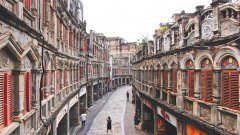Warsaw exhibition provide glimpse into lives of ancient Chinese "scholar-officials"
WARSAW, Nov. 19 (Xinhua) -- A collection of 165 selected pieces of cultural relics from China are on display here until January 2017, providing fascinating glimpse into lives of ancient Chinese literati, or the so-called "scholar-officials".
Entitled "Life in the Midst of Beauty. The World of a Chinese Scholar", the exhibition being held in the National Museum in Warsaw is part of exhibition exchange program between the organization and the National Museum of China.
The exhibited pieces of art belong to the National Museum of China. Huang Zhenchun, deputy director of the National Museum of China, said this exhibition is the largest foreign exhibition held by the Chinese museum in recent years.
The collection of cultural relics are selected to illustrate the painting and lives of ancient Chinese literati from three aspects. It contains calligraphy, painting, ceramics, jades, bronzes, furniture and textiles.
The exhibition focuses on Chinese literati, the so-called "scholar-officials", an elite class in ancient Chinese society and introduces their everyday life.
"The exhibition is very meaningful and allows the Poles to learn more about the ancient Chinese culture and history," said Agnieszka Morawinska, director of the National Museum in Warsaw.
Among the most precious pieces exhibited are a fragment of engraved stone from the Eastern Han Dynasty (25 AD-220 AD) and a scroll by artist Wen Zhenming (1470-1559), a leading Ming Dynasty painter, calligrapher, poet and scholar.
One section of the exhibition is dedicated to the literati painting, the value of which lied in self-cultivation and expression. It enables publicity to get to know the core of a unique literati spirit. Among the works on display are Chinese painters Wang Ze, Wang Jian and many others are present. One can also enjoy the works of Giuseppe Castiglione (1688-1766), an Italian Jesuit missionary who served as a court painter in China for more than 50 years.















